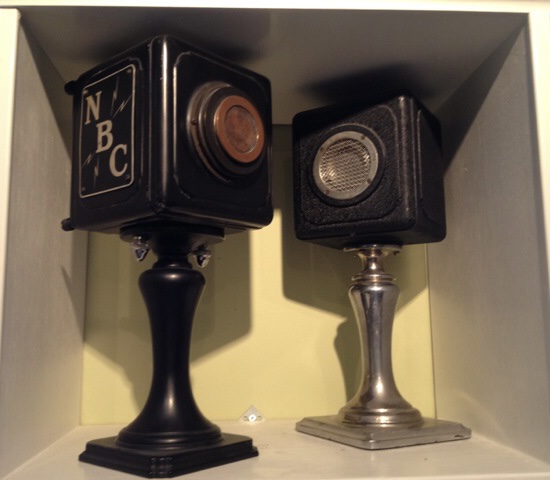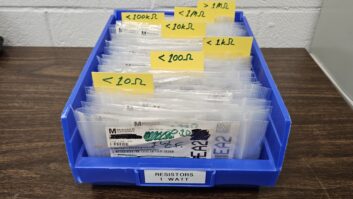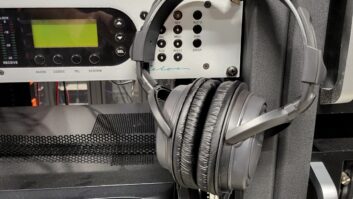In the June 29 issue, we discussed Oslo inverted-U window-mount air conditioners. Their design reduces inside noise.
Aaron Read is IT and engineering director for Rhode Island Public Radio. He hasn’t used Oslo models, but based on his work with similar products from Soleus, he offers a caveat: condensate drainage.
In the first generation of these units, the inverted-U design required a separate drain tube be run through a hole you had to drill below the window to the outside. The drainage issue was the major reason why Aaron decided to buy four Midea 8,000 BTU U-Shaped Air Conditioners, Model MAW08V1QWT.
It uses a similar concept, but the “U” is not inverted, and everything drains easily to the outside.

Aaron says he loves these units, they work really well and are amazingly quiet. The design lets you open the window while installed. Features include smartphone control via iOS and Android apps, and voice control with Amazon Alexa and Google Assistant.
They are a bit heavier than comparable 8000 BTU window units, and installation is not terribly intuitive. But overall, he says, they’re almost as good as a real central-air system.
One thing to keep in mind with any window-unit A/C is that the drum fan inside will collect dust/dirt over time each summer. It is a real pain in the neck to pry apart the Midea to extract the drum fan; it’s an even bigger pain to use soap, hot water and cotton swabs to laboriously clean the inside of 120+ little fan blades.
But it must be done; every autumn there is a lot of dirt buildup on the blades, and if you don’t clean it you’ll not only lose efficiency but you’ll get a funky smell in short order.
Cousins, identical cousins
Brad Jones of Stokesdale, N.C., sent a clarification on vintage microphones described in the July 20 column. The photo here shows two nearly identical condenser mics. On the left is the RCA 4A, and to the right, the look-alike Turner Model 1 condenser microphone.
The Turner has an upgraded Western Electric element and was manufactured in Cedar Rapids, Iowa. The RCA uses a different stand and metal case, which includes a dimple on the top as well as an ID plate.

By the way, eBay has these for sale for between $3,000 and $4,000. Thanks, Brad, for the clarification.
A shocking experience
Michael Shovan, CBTE, is with fd&t Technical Services in Newburgh, N.Y. He weighed in on topics from our April 27 Workbench.
Like Frank Hertel, he had the shocking experience of innocently touching an Austin Ring transformer on his station’s main tower and got a brief yet long-lasting RF burn. The lesson prompted lifelong caution when dealing with anything electrical. Michael believes the experience engaged his obsessive-compulsive tendency to always “look, point and say before doing.”
He also described the “fun” of working with hard-wired telephone networks. Befriending visiting telco techs, Michael would listen for “secrets” and tips that helped him troubleshoot — and sometimes correct — minor problems.
Every year, one station did a fundraiser “call-in” special where they would run the old 50-pair cables and jackboxes from the service panel to the studio. He learned the trick of dialing 9-9-0, which would return an automated voice that identified each pair’s Central Office number.
The owners of another station decided to install a “managed” long-distance system to control long-distance costs, requiring a code to be dialed before the long-distance number was entered. One of the telco technicians showed Michael the “secret” code to bypass the long-distance restriction — in the event of equipment problems, of course.
It wasn’t long before the news director found out and demanded the code so his staff could get away with murder making free long-distance calls. Michael refused, knowing the owners of the station would notice a spike in the long-distance bill charges, and Michael would get an appropriate “spike” in the least-comfortable spot. Oh, the good old days!
[Read Another Workbench by John Bisset]
“Block” it out
It is said that the world seems to be shrinking thanks to technology. It has been true for Workbench over the years.
Most recently we received a letter from Nicolin Salis in Switzerland, expressing thanks for Dennis Sloatman’s contribution in the Sept. 1 issue about limiting inrush currents using NTC or negative temperature coefficient devices.
Nicolin is a broadcast engineer who has four 27-inch monitors on his office desk. He experienced the same inrush current problem as Dennis did. In his case, the large inrush current repeatedly destroyed the switch on the power strip, requiring regular replacement!
Dennis’ solution was simple and inexpensive, but if you’re short on time, Nicolin suggests a ready-to-use answer. He recommends the ESG 5 model from Block. Nicolin isn’t sure if this device also works using NTC, as the inside is filled with potting compound. But the ESG 5 solved the problem. Having had success with his office desk monitors, Nicolin added an ESG 5 to his workbench, with its many measuring devices.

Allied Electronics Communications offers a couple of Block models or search for “Block USA inrush current limiter.” A specifications PDF can be found here.
Got a tip-top tip? Workbench runs on your good ideas. Email [email protected].












